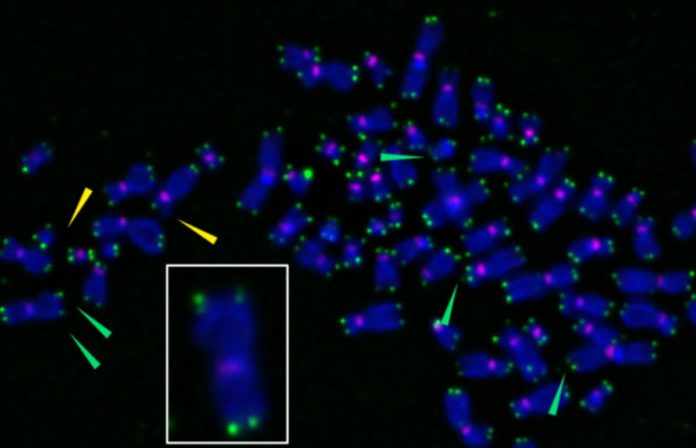Senescent cells, or cells without the capacity to proliferate, build up with age and are a major contributor to age-related illnesses like cancer, dementia, and cardiovascular disease. In a recent study, a group of scientists from the University of Pittsburgh and the UPMC Hillman Cancer Center discovered how senescent, or “zombie,” cells grow.
The work, which was just published in Nature Structural & Molecular Biology, demonstrates for the first time how oxidative damage to telomeres, the protecting ends of chromosomes that function like plastic shoelace caps, can cause cellular senescence. These discoveries may ultimately lead to novel treatments that support healthy aging or fight cancer.
Although zombie cells are still alive, they are unable to divide, thus they are unable to replenish tissues, according to senior author Patricia Opresko, Ph.D., a professor of pharmacology and chemical biology as well as environmental and occupational health at Pitt.
“Although zombie cells don’t function properly, they’re not couch potatoes — they actively secrete chemicals that promote inflammation and damage neighboring cells. Our study helps answer two big questions: How do senescent cells accumulate with age, and how do telomeres contribute to that?”
When a healthy human cell divides into two identical cells, a small piece of DNA is cut off the end of each chromosome. This means that with each division, telomeres get shorter and shorter. But it’s still not clear if, over the course of a person’s life, a cell can divide so many times that its telomeres wear away completely, leading to a zombie-like state. Long before the discovery of DNA damage at telomeres, scientists could only speculate as to how telomere shortening causes senescence in lab-grown cells.
Due to the non-specific nature of the DNA damage tools utilized up until this point, which resulted in lesions over the entire chromosome, testing this notion has not been viable.
According to lead author Ryan Barnes, Ph.D., a postdoctoral fellow in Opresko’s group, “Our new tool is like a molecular sniper. It creates oxidative damage exclusively at the telomeres.”
To achieve such pinpoint accuracy, the team utilized a specialized protein that binds solely to telomeres. This protein works as a catcher’s mitt, capturing the light-sensitive dye “baseballs” that researchers threw at the cell. The dye emits reactive oxygen molecules that harm DNA when activated by light. Because the protein that catches the dye only binds to telomeres, the tool damages DNA only at the ends of chromosomes.
Using human cells produced in a dish, the researchers discovered that damage to the telomeres caused the cells to enter a zombie-like state within four days — far faster than the weeks or months of repeated cell divisions required to induce senescence by telomere shortening in the laboratory.
Opresko, who also co-leads the Genome Stability Program at UPMC Hillman, remarked that “We found a new mechanism for inducing senescent cells that is completely dependent on telomeres. These findings also solve the puzzle of why dysfunctional telomeres are not always shorter than functional ones.”
Sunlight, alcohol, cigarettes, a bad diet, and other things make molecules of reactive oxygen that damage DNA. Telomeres are “exquisitely sensitive” to oxidative damage, according to Opresko, despite the fact that cells have repair pathways to patch up DNA defects. The scientists discovered that telomere degradation caused stress signaling pathways that brought to senescence and impaired DNA replication.
Barnes added, “Now that we understand this mechanism, we can start to test interventions to prevent senescence. For example, maybe there are ways to target antioxidants to the telomeres to protect them from oxidative damage .”
The results could also be used to make new drugs called senolytics that can find and kill zombie cells.
“By reducing the accumulation of zombie cells, which contribute to degenerative diseases, we might be able to promote ‘healthspan’ — the length of time that a person is healthy,” he said.
Image Credit: Getty
You were reading: A New Mechanism For Inducing Senescent Cells – Study
